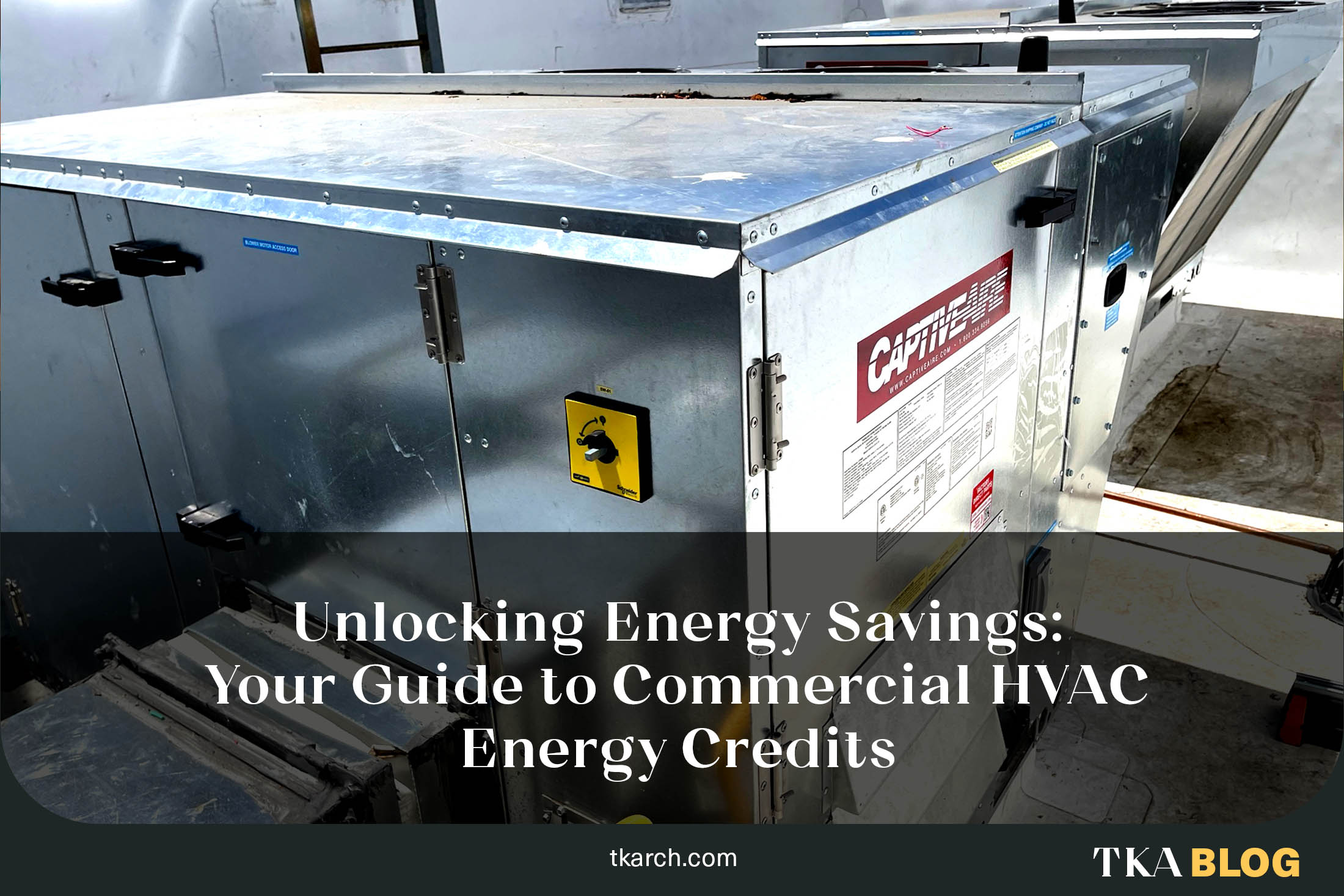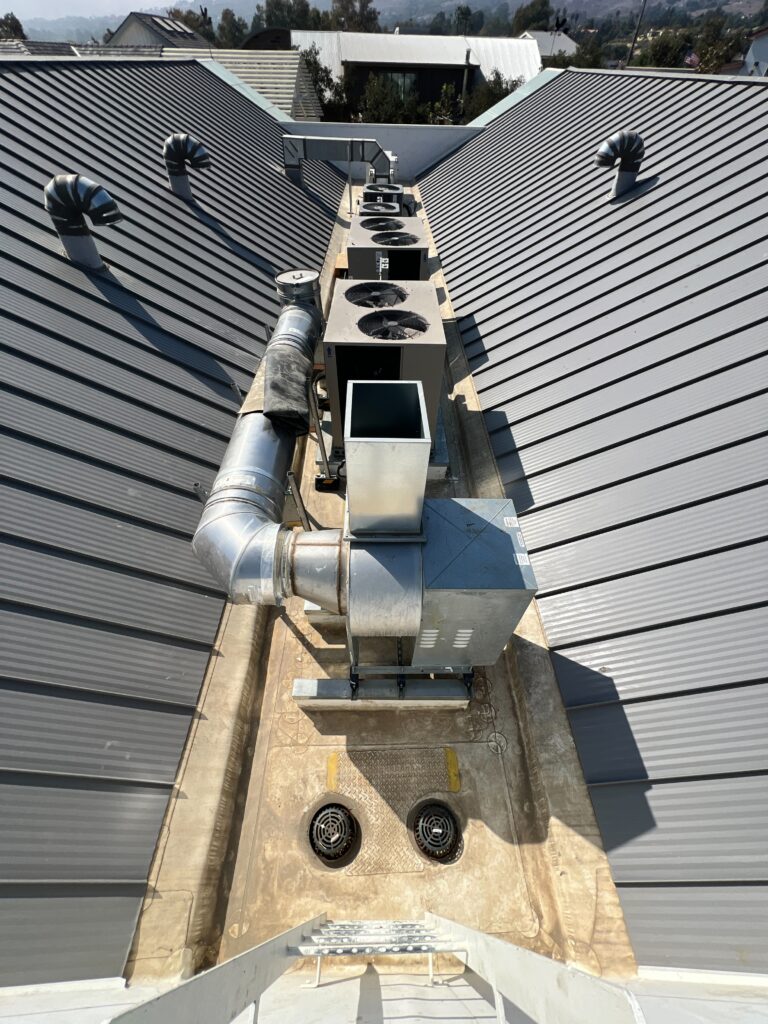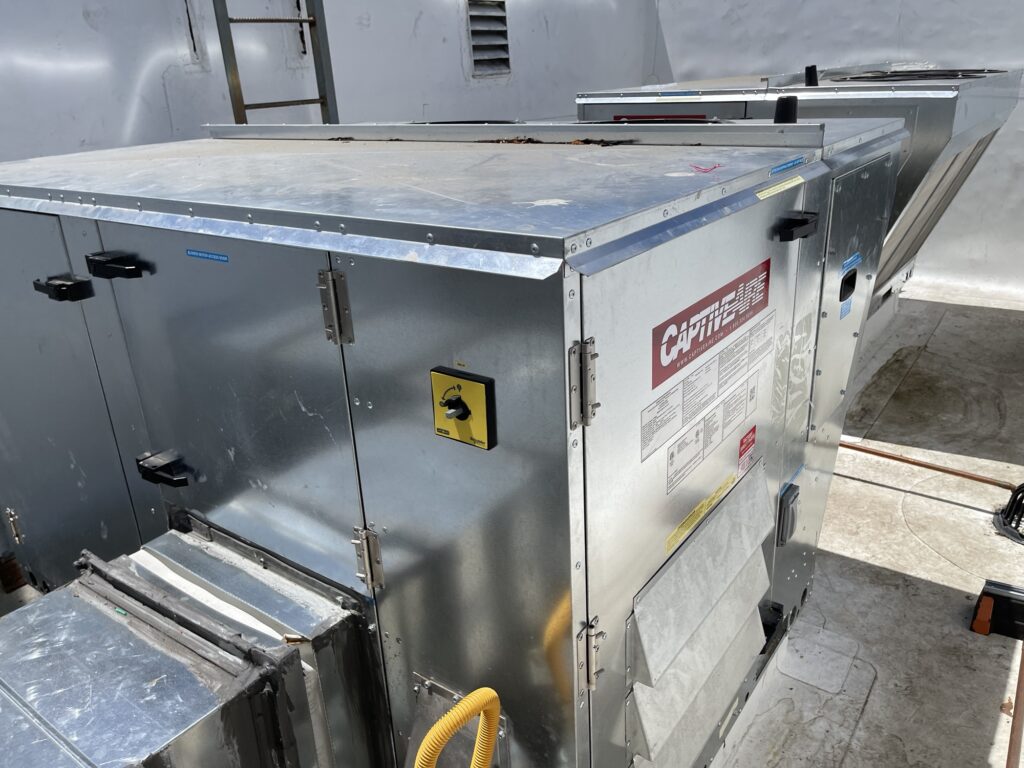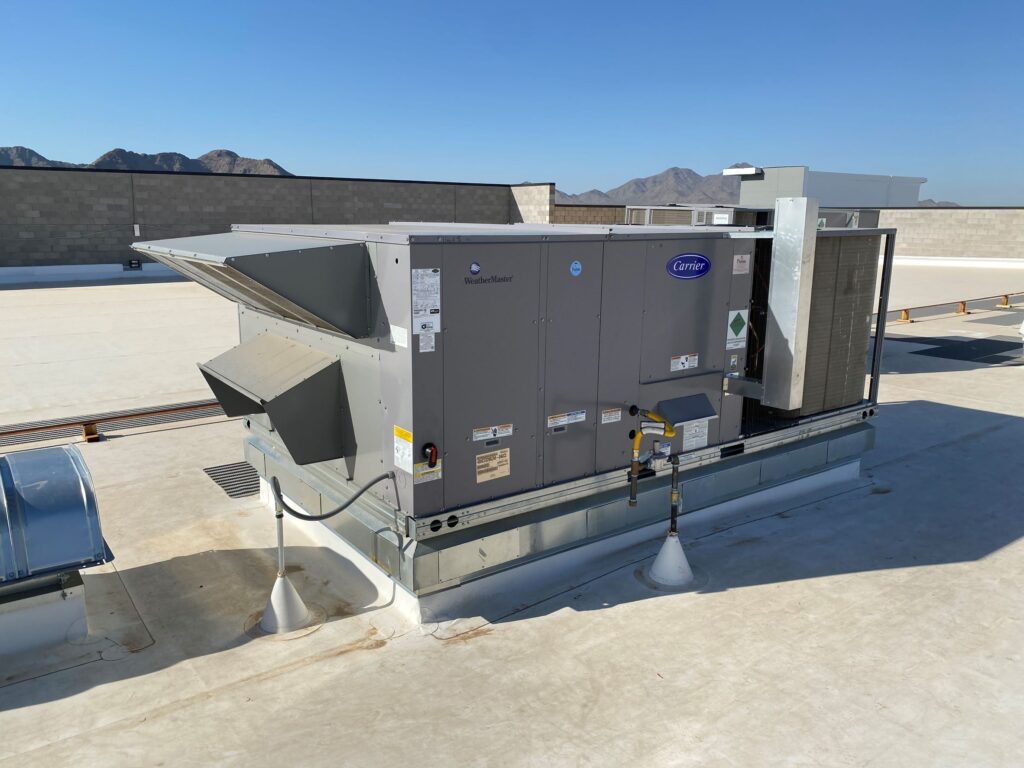
November 2024
by Levi Lawson
In today’s energy-conscious landscape, utility companies across the country offer energy credits and incentives to encourage replacing outdated HVAC systems with high-efficiency models. For building owners, these credits can offset the costs of upgrades, improve operational efficiency, and enhance environmental sustainability. Navigating commercial HVAC energy credits can be complex, but the financial and environmental benefits make it worthwhile. At TK Architects, our engineers have helped our clients maximize their energy credit potential in all five regions of the United States.
Understanding Energy Credit Programs
Utility companies, often regulated by state and federal energy efficiency mandates, design energy credit programs to encourage adoption of high-efficiency HVAC systems. These programs vary widely in scope, eligibility requirements, and payout structures. Generally, energy credits are offered in the form of:
• Utility Rebates: Require submission of an application post-purchase.
• Federal Tax Credits: Offered by the federal government for specific energy-efficient upgrades.
In addition to efficiency mandates, utility companies are motivated to reduce overall energy demand, particularly during peak usage times. When their customers install energy-efficient equipment, utilities can defer the need for new power plants and infrastructure investments. Energy credits are a win-win, promoting sustainability while helping utilities manage demand.
Financial Benefits
Upgrading to energy-efficient HVAC equipment provides financial benefits beyond energy credits. Key benefits to consider:
• Upfront cost savings: Energy credits can cover a portion of equipment costs, reducing initial capital outlay. Timing the upgrade properly helps to align with program cycles and funding availability, while still considering seasonal demand and potential downtime. Additionally, grants or special financing programs can be a good fit in certain cases.
• Long-term energy savings: High-efficiency systems lower energy consumption and reduce utility bills, depending on the building size and usage patterns. Energy-efficient equipment typically has a higher upfront cost, so the credit can offset that as the payback period and ROI are being calculated.
• Tax advantages: In addition to utility credits, federal incentives like the 179D deduction can apply to commercial buildings meeting energy efficiency thresholds. Combine multiple incentives to stack them where permissible.
• Improved asset value and building comfort: Buildings with higher-efficiency equipment typically appraise higher than their standard counterparts. Additionally, an often overlooked benefit is enhanced comfort that comes along with improved climate control and air quality.
Identifying Available Energy Credits
Local utility companies often have information on applicable rebates and incentives for their products available online:
• Visiting your local utility company’s website to explore available programs may help avoid common pitfalls. Some examples TK Architects commonly sees are not obtaining pre-approval, incomplete Construction Documentation, selecting standard equipment, and not being aware of completion or application deadlines.
• We advise at this time contacting utility representatives for detailed information. It is usually a free service offered where a utility agent or specialist can provide real dollar amounts for each piece of equipment. A recent project in Florida was offering $600-800 per rooftop unit depending on tonnage, plus an additional $500 each for providing a CO2 sensor for demand control ventilation. You will generally be asked to provide a Tax ID number for rebate payment quickly after installation.
• Federal tax rebates allow building owners to have deductions or credits applied to their tax liabilities.


Identifying Eligible HVAC Equipment
To qualify for energy credits, HVAC equipment must meet specific energy efficiency standards. TK Architects has experience specifying equipment that complies with ASHRAE 90.1 Standards, SEER, EER, and HSPF, among others.
Examples of HVAC equipment types eligible for energy credits include:
• High-efficiency chillers and boilers
• Variable refrigerant flow (VRF) systems
• High efficiency rooftop units (RTUs)
• Heat pumps (air source, water source, and geothermal)

Learning about eligible HVAC equipment can also point to future trends in energy credit programs. TK Architects is anticipating more aggressive credit programs targeting net-zero emissions as decarbonization efforts intensify. There might also be expanded eligibility for innovative technologies, such as more advanced heat pumps and energy storage options. And finally, there is also a very high likelihood that smart grid systems will enhance their integration to optimize energy use in commercial applications.
Steps to Navigate the Process
To explore energy credit opportunities, here are recommended steps:
1. Consult with an Engineering Professional at TK Architects to identify opportunities for improvement
Assessing current energy usage identifies inefficiencies in your existing HVAC systems and determines the potential benefits of upgrading. Existing buildings that have undergone remodels or have reduced occupancy (such as a theater recliner conversion) are great candidates for equipment replacement. We will also engage with manufacturers for equipment selection.
2. Research local utility programs
Utility companies typically publish details of energy credit programs on their websites. Often there are agents available to guide pre-approval. Many programs require pre-approval before purchasing or installing equipment. This ensures compliance and reserves funds for the project.
3. Obtain necessary Construction Documents
Engineers at TK Architects will create permit documentation outlining all equipment specifications and calculations. We will also assist with the application process and ensure compliance.
4. Submit applications
Ensure the selected equipment meets or exceeds the efficiency standards required by the utility program, complete all forms, include supporting Construction Documents, and follow submission guidelines. Keep a record of submission confirmations.
5. Installation and verification
Proceed with equipment installation. The energy credit programs will require post-installation verification and/or inspections for proof of purchase and installation. The installation contractor may also need to submit certification documents.
6. Receive Credits
Energy credits may come as a check, bill credit, or tax deduction. It is also advised to keep record for future reference or audits.
Conclusion
Navigating energy credits for replacement HVAC equipment in commercial buildings can be complex, and understanding the available incentives and the process is crucial. By conducting due diligence, engaging our professionals, and staying informed on program requirements, businesses can successfully leverage energy credits to make energy-efficient upgrades more affordable. As energy efficiency programs evolve, we at TK Architects are dedicated to staying informed and proactive, ensuring your business remains at the forefront of smart energy management.
Ready to explore how energy credits can support your next upgrade? Let’s talk!
Principal, Levi Lawson



